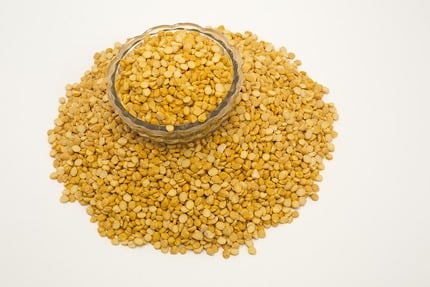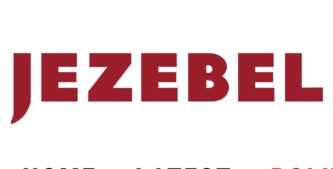Researchers at the University of Nottingham and a spin-out company called The Good Pulse Company have developed a vegan cheese made from yellow split peas. This cheese, called “Cheese from Peas,” is higher in protein compared to traditional vegan cheese, which is typically made from coconut oil and low in protein. The researchers believe that many companies rushed to create vegan products without considering the nutritional aspect, but now they are focused on creating healthier and more sustainable options. Yellow split peas are naturally high in protein, making them an ideal ingredient for vegan cheese.
The process of making Cheese from Peas involves grinding the peas into a flour, which is then used to make a powdered cheese mix. This mix, which is about 90% yellow split peas, is combined with water and cooked for a certain amount of time. The cheese is then molded and allowed to ripen overnight. The researchers are excited about this product because it allows people to consume legumes in the form of cheese, which is both healthy and nutritious.
Cheese from Peas currently contains about 4-5% protein, but the researchers are working on adjusting the recipe to increase the protein content to 9-10%. This is still lower than the protein content in traditional cheddar cheese, which is around 25%. However, mass-produced vegan cheese typically contains as little as 0.2% protein. Some homemade and artisanal vegan cheeses made from nuts can contain about 10% protein, but these are not suitable for people with nut allergies and are often expensive.
The researchers have not revealed all the details of how they made the product taste like cheese, as they have submitted a patent that is under review. However, they have removed the “earthy” flavors typical of yellow split peas, and manufacturers can add different flavorings to give it a more cheese-like taste. The researchers believe that their cheese has environmental benefits as well, as peas and pulses have a lower carbon footprint compared to milk and cheese.
The Good Pulse Company plans to sell the powdered cheese mix to cheese manufacturers and vegan cheese manufacturers so that they can create different types of cheeses with it. They are currently seeking a partnership with a UK-based dairy or vegan cheese manufacturer. The researchers have received funding from Innovate UK to further develop their technologies.
Original news source: Could cheese made from peas be a healthy alternative for vegans? (BBC)
Listen
Slow
Normal
Fast
Group or Classroom Activities
Warm-up Activities:
– News Summary
Instructions:
1. Divide the class into pairs.
2. Give each pair a copy of the article.
3. Instruct the pairs to read the article and together, create a summary of the main points.
4. After a few minutes, have each pair share their summary with the class.
– Opinion Poll
Instructions:
1. Divide the class into groups of 3-4 students.
2. Assign each group a topic related to the article (e.g. vegan cheese, plant-based diets, environmental impact of food production).
3. Instruct each group to come up with 3-4 questions related to their assigned topic.
4. Have each group conduct an opinion poll within the class, asking the questions and recording the responses.
5. After the poll, have each group present their findings to the class and facilitate a discussion.
– Sketch It
Instructions:
1. Divide the class into pairs.
2. Assign each pair a specific scene or step from the process of making Cheese from Peas.
3. Instruct each pair to sketch out their assigned scene or step.
4. After a few minutes, have each pair share their sketch with the class and explain what they drew.
– Vocabulary Pictionary
Instructions:
1. Write down 10-15 vocabulary words from the article on separate index cards.
2. Divide the class into two teams.
3. One student from each team will come to the front of the class.
4. Show a vocabulary word to the two students.
5. The students will have 30 seconds to draw a picture that represents the word.
6. The rest of their team will try to guess the word based on the drawing.
7. Repeat with different students and vocabulary words until all words have been used.
– Pros and Cons
Instructions:
1. Divide the class into two groups: one group representing the researchers and the other group representing the general public.
2. Instruct each group to brainstorm a list of pros and cons for the development and production of Cheese from Peas.
3. After a few minutes, have each group present their pros and cons to the class.
4. Facilitate a discussion where students from both groups can debate and discuss the different perspectives.
Comprehension Questions:
1. What is the main ingredient in the vegan cheese called “Cheese from Peas”?
2. How is the Cheese from Peas made?
3. Why do the researchers believe that yellow split peas are an ideal ingredient for vegan cheese?
4. How does the protein content of Cheese from Peas compare to traditional cheddar cheese?
5. What is the protein content in mass-produced vegan cheese typically?
6. Why are homemade and artisanal vegan cheeses made from nuts not suitable for people with nut allergies?
7. What have the researchers done to make the Cheese from Peas taste like cheese?
8. What are the environmental benefits of using peas and pulses in cheese production compared to milk and cheese?
Go to answers ⇩
Listen and Fill in the Gaps:
Researchers at the University of Nottingham and a spin-out company (1)______ The Good Pulse Company have (2)______ a vegan cheese made from yellow split peas. This cheese, called “Cheese from Peas,” is higher in protein (3)______ to traditional vegan cheese, which is typically made from coconut oil and low in protein. The researchers believe that many companies (4)______ to create vegan products without considering the nutritional aspect, but now they are focused on creating healthier and more sustainable options. Yellow split peas are naturally high in protein, making them an ideal ingredient for vegan cheese.
The process of making Cheese from Peas involves grinding the peas into a flour, which is then used to make a powdered cheese mix. This mix, which is about 90% (5)______ split peas, is combined with water and cooked for a certain amount of time. The cheese is then molded and allowed to ripen overnight. The (6)______ are excited about this (7)______ because it allows people to consume legumes in the form of cheese, which is both healthy and nutritious.
Cheese from Peas currently (8)______ about 4-5% protein, but the researchers are working on adjusting the recipe to increase the protein content to 9-10%. This is still lower than the (9)______ content in traditional (10)______ cheese, which is around 25%. However, mass-produced vegan cheese typically contains as little as 0.2% protein. Some homemade and artisanal vegan cheeses made from nuts can contain about 10% protein, but these are not suitable for people with nut allergies and are often (11)______.
The researchers have not revealed all the details of how they made the product taste like cheese, as they have submitted a patent that is under (12)______. However, they have removed the “earthy” flavors typical of yellow split peas, and (13)______s can add different (14)______ to give it a more cheese-like taste. The researchers believe that their cheese has environmental benefits as well, as peas and (15)______ have a lower carbon footprint compared to milk and cheese.
The Good Pulse Company plans to sell the powdered cheese mix to cheese manufacturers and (16)______ cheese manufacturers so that they can create different types of cheeses with it. They are currently seeking a partnership with a UK-based dairy or vegan cheese manufacturer. The researchers have received funding from Innovate UK to further develop their technologies.
Go to answers ⇩
Discussion Questions:
Students can ask a partner these questions, or discuss them as a group.
1. What is your opinion on the idea of vegan cheese made from yellow split peas?
2. How would you feel if you had the opportunity to try Cheese from Peas?
3. Do you like the taste of traditional vegan cheese made from coconut oil? Why or why not?
4. Do you think it’s important for vegan products to be nutritionally balanced? Why or why not?
5. What is your favorite vegan cheese alternative? Why do you like it?
6. How do you think the taste of Cheese from Peas compares to traditional cheddar cheese?
7. Do you think it’s necessary for vegan cheese to have a similar protein content to traditional cheese? Why or why not?
8. What other ingredients do you think could be used to make vegan cheese more nutritious?
9. How do you think the taste of Cheese from Peas could be improved?
10. What are some potential advantages of consuming legumes in the form of cheese?
11. How do you think the environmental benefits of Cheese from Peas compare to traditional cheese?
12. Would you be interested in trying Cheese from Peas? Why or why not?
13. How do you think the market for vegan cheese will change with the introduction of Cheese from Peas?
14. What challenges do you think the Good Pulse Company will face in selling their powdered cheese mix to cheese manufacturers?
15. How do you think the development of Cheese from Peas will impact the vegan food industry?
Individual Activities
Vocabulary Meanings:
Match each word to its meaning.
Words:
1. vegan
2. cheese
3. yellow
4. split
5. peas
6. protein
7. healthier
8. sustainable
Meanings:
(a) A type of diet that excludes animal products
(b) To divide or separate into parts
(c) A dairy product made from milk
(d) The color of the cheese made from peas
(e) Better for one’s well-being
(f) Small round green seeds that are a source of protein
(g) Able to be maintained or continued at a certain rate or level
(h) A nutrient that is essential for growth and repair
Go to answers ⇩
Multiple Choice Questions:
1. What is the main ingredient in “Cheese from Peas”?
(a) Coconut oil
(b) Nuts
(c) Yellow split peas
(d) Milk
2. Why did the researchers develop “Cheese from Peas”?
(a) To create a vegan cheese that is lower in protein
(b) To create a vegan cheese that is made from coconut oil
(c) To create a vegan cheese that is made from nuts
(d) To create a vegan cheese that is higher in protein
3. How is the protein content in “Cheese from Peas” compared to traditional vegan cheese?
(a) Lower
(b) Higher
(c) The same
(d) Not mentioned in the article
4. What is the protein content in traditional cheddar cheese?
(a) Around 25%
(b) 4-5%
(c) 9-10%
(d) 0.2%
5. Why are homemade and artisanal vegan cheeses made from nuts not suitable for people with nut allergies?
(a) Because they contain coconut oil
(b) Because they contain yellow split peas
(c) Because they contain nuts
(d) Because they contain milk
6. What have the researchers done to make “Cheese from Peas” taste like cheese?
(a) Removed the “earthy” flavors typical of yellow split peas
(b) Added more yellow split peas
(c) Added coconut oil
(d) Added nuts
7. What are the environmental benefits of “Cheese from Peas”?
(a) Peas and pulses have a higher carbon footprint compared to milk and cheese
(b) Peas and pulses have a lower carbon footprint compared to milk and cheese
(c) Peas and pulses have the same carbon footprint as milk and cheese
(d) Not mentioned in the article
8. Who will The Good Pulse Company sell the powdered cheese mix to?
(a) Dairy and meat manufacturers
(b) Nut and seed manufacturers
(c) Milk and cheese manufacturers
(d) Cheese manufacturers and vegan cheese manufacturers
True or False Questions:
1. Mass-produced vegan cheese typically contains as little as 0.2% protein.
2. Researchers at the University of Nottingham and The Good Pulse Company have developed a vegan cheese made from yellow split peas.
3. The researchers have added the “earthy” flavors typical of yellow split peas to make the cheese taste less like traditional cheese.
4. The Good Pulse Company does not plan to sell the powdered cheese mix to cheese manufacturers and vegan cheese manufacturers.
5. The researchers believe that many companies carefully considered the nutritional aspect before creating vegan products.
6. This vegan cheese, called “Cheese from Peas,” is higher in protein compared to traditional vegan cheese made from coconut oil.
7. The process of making Cheese from Peas involves grinding the peas into a flour and combining it with water to make a powdered cheese mix.
8. Cheese from Peas currently contains about 4-5% protein, and the researchers are not working on increasing the protein content to 9-10%.
Go to answers ⇩
Write a Summary:
Write a summary of this news article in two sentences.
Writing Questions:
Answer the following questions. Write as much as you can for each answer.
1. What is the nutritional advantage of the vegan cheese made from yellow split peas compared to traditional vegan cheese?
2. How is the Cheese from Peas made?
3. What is the current protein content of Cheese from Peas and what are the researchers working on?
4. What are the challenges with homemade and artisanal vegan cheeses made from nuts?
5. What are the environmental benefits of Cheese from Peas compared to traditional milk and cheese?
Answers
Comprehension Question Answers:
1. What is the main ingredient in the vegan cheese called “Cheese from Peas”?
The main ingredient in Cheese from Peas is yellow split peas.
2. How is the Cheese from Peas made?
The Cheese from Peas is made by grinding the peas into a flour, which is then used to make a powdered cheese mix. This mix is combined with water and cooked, then molded and allowed to ripen overnight.
3. Why do the researchers believe that yellow split peas are an ideal ingredient for vegan cheese?
The researchers believe that yellow split peas are an ideal ingredient for vegan cheese because they are naturally high in protein.
4. How does the protein content of Cheese from Peas compare to traditional cheddar cheese?
The protein content of Cheese from Peas is still lower than traditional cheddar cheese, but the researchers are working on increasing it to 9-10%.
5. What is the protein content in mass-produced vegan cheese typically?
The protein content in mass-produced vegan cheese is typically as low as 0.2%.
6. Why are homemade and artisanal vegan cheeses made from nuts not suitable for people with nut allergies?
Homemade and artisanal vegan cheeses made from nuts are not suitable for people with nut allergies because they contain nuts, which can trigger an allergic reaction.
7. What have the researchers done to make the Cheese from Peas taste like cheese?
The researchers have not revealed all the details, as they have submitted a patent that is under review. However, they have removed the “earthy” flavors typical of yellow split peas, and manufacturers can add different flavorings to give it a more cheese-like taste.
8. What are the environmental benefits of using peas and pulses in cheese production compared to milk and cheese?
Peas and pulses have a lower carbon footprint compared to milk and cheese, so using them in cheese production has environmental benefits.
Go back to questions ⇧
Listen and Fill in the Gaps Answers:
(1) called
(2) developed
(3) compared
(4) rushed
(5) yellow
(6) researchers
(7) product
(8) contains
(9) protein
(10) cheddar
(11) expensive
(12) review
(13) manufacturer
(14) flavorings
(15) pulses
(16) vegan
Go back to questions ⇧
Vocabulary Meanings Answers:
1. vegan
Answer: (a) A type of diet that excludes animal products
2. cheese
Answer: (c) A dairy product made from milk
3. yellow
Answer: (d) The color of the cheese made from peas
4. split
Answer: (b) To divide or separate into parts
5. peas
Answer: (f) Small round green seeds that are a source of protein
6. protein
Answer: (h) A nutrient that is essential for growth and repair
7. healthier
Answer: (e) Better for one’s well-being
8. sustainable
Answer: (g) Able to be maintained or continued at a certain rate or level
Go back to questions ⇧
Multiple Choice Answers:
1. What is the main ingredient in “Cheese from Peas”?
Answer: (c) Yellow split peas
2. Why did the researchers develop “Cheese from Peas”?
Answer: (d) To create a vegan cheese that is higher in protein
3. How is the protein content in “Cheese from Peas” compared to traditional vegan cheese?
Answer: (b) Higher
4. What is the protein content in traditional cheddar cheese?
Answer: (a) Around 25%
5. Why are homemade and artisanal vegan cheeses made from nuts not suitable for people with nut allergies?
Answer: (c) Because they contain nuts
6. What have the researchers done to make “Cheese from Peas” taste like cheese?
Answer: (a) Removed the “earthy” flavors typical of yellow split peas
7. What are the environmental benefits of “Cheese from Peas”?
Answer: (b) Peas and pulses have a lower carbon footprint compared to milk and cheese
8. Who will The Good Pulse Company sell the powdered cheese mix to?
Answer: (d) Cheese manufacturers and vegan cheese manufacturers
Go back to questions ⇧
True or False Answers:
1. Mass-produced vegan cheese typically contains as little as 0.2% protein. (Answer: True)
2. Researchers at the University of Nottingham and The Good Pulse Company have developed a vegan cheese made from yellow split peas. (Answer: True)
3. The researchers have added the “earthy” flavors typical of yellow split peas to make the cheese taste less like traditional cheese. (Answer: False)
4. The Good Pulse Company does not plan to sell the powdered cheese mix to cheese manufacturers and vegan cheese manufacturers. (Answer: False)
5. The researchers believe that many companies carefully considered the nutritional aspect before creating vegan products. (Answer: False)
6. This vegan cheese, called “Cheese from Peas,” is higher in protein compared to traditional vegan cheese made from coconut oil. (Answer: True)
7. The process of making Cheese from Peas involves grinding the peas into a flour and combining it with water to make a powdered cheese mix. (Answer: True)
8. Cheese from Peas currently contains about 4-5% protein, and the researchers are not working on increasing the protein content to 9-10%. (Answer: False)
Go back to questions ⇧













